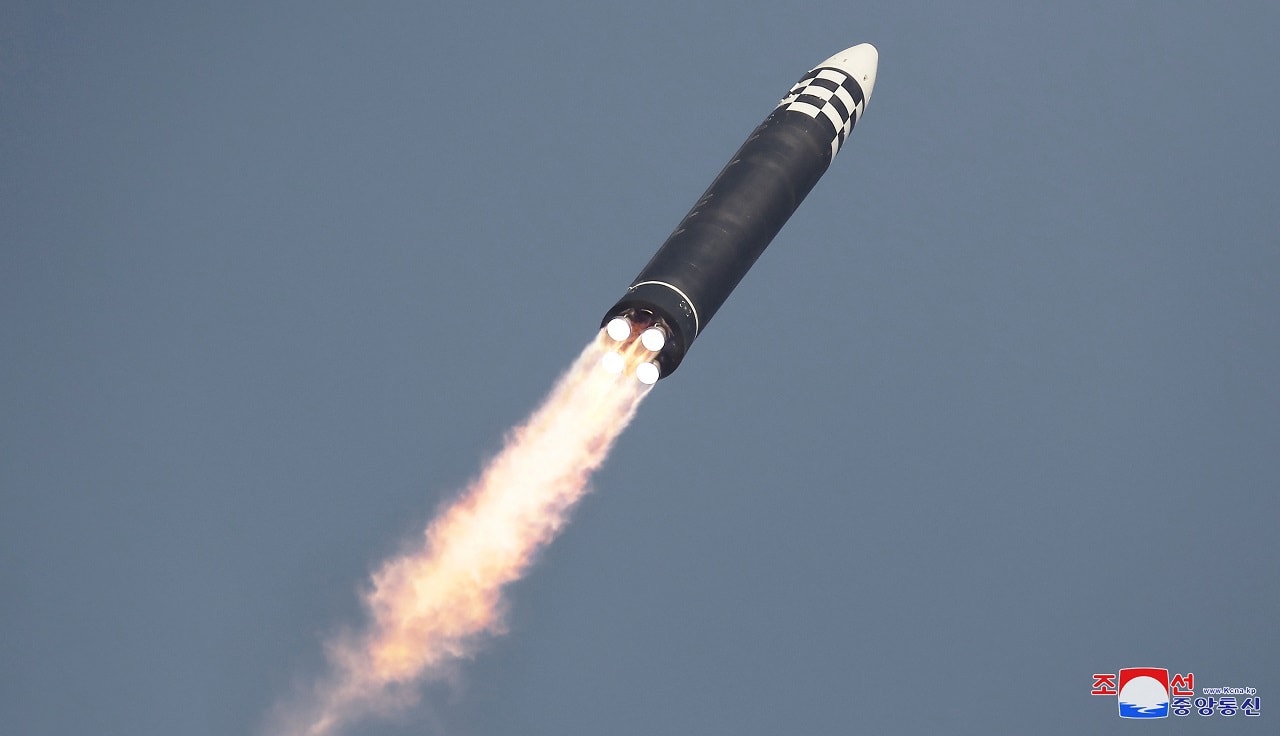The Islamic Republic of Iran and the Democratic People’s Republic of Korea share a long history of military and strategic cooperation. While Pyongyang and Tehran established diplomatic relations in the early 1970s, weapons transfers between the two countries did not begin until the 1979 Iranian Revolution.
The transactional relationship between Tehran and Pyongyang has grown in the four decades following the fall of Shah Mohammad Reza Pahlavi. Designated by the West as rogue states, Iran and North Korea share a mutual disdain for external forces, and they prioritize defensive capacities. In order to evade trade restrictions and sanctions imposed by the international community, North Korea and Iran use advanced underground trade networks to maintain their relationship. North Korean-Iranian arms sales pose a grave threat to U.S. interests.
Iran and North Korea: Partners in Proliferation
The military relationship between the two sides blossomed in the 1980s during the Iran-Iraq War. Pyongyang became a major weapons supplier to Tehran, transferring Soviet T-54/T-55 tanks, Chinese equipment, and ammunition to Iran’s military. Pyongyang’s most significant export to Iran during this time was its advisers. Analysts believe that by the end of the 1980s, nearly 300 North Korean military advisers worked in Tehran.
A few years later, Iran acquired Scud-C missiles with a 500-km range from the Hermit Kingdom, helping kickstart the two countries’ cooperation on ballistic missiles. North Korea’s sale of its Hwasong-7 medium-range ballistic missile to Iran gave the regime in Tehran the technology it needed to design its native-grown Shahab-3 single-stage, liquid-fuel ballistic missile.
After Tehran test-launched its newly acquired Scud-C missile, the U.S. Department of State sanctioned Iran’s Ministry of Defense and Armed Forces Logistics for missile technology proliferation activities with Pyongyang. Nevertheless, arms sales between North Korea and Iran continued to grow throughout the 1990s and early 2000s. In 2016, the Obama administration put out a sanctions notice regarding Iran’s work on an 80-ton rocket booster. The device bore a striking resemblance to North Korea’s RD-250 engines, which also have an 80-ton thrust. Pyongyang used the RD-250 engine in a 2017 intercontinental ballistic missile test launch, and the danger that Iran will acquire the capacity to successfully launch an ICBM of its own is imminent.
A Growing Two-Sided Threat
Part of the Iranian navy’s submarine fleet can also be attributed to North Korea. Iran’s Ghair-class submarines are a licensed copy of Pyongyang’s Yono-class vessels. They are a mainstay in Iran’s navy. First purchased in the 2000s, these miniature submarines give Iran the ability to stage anti-access/area-denial operations in its region. If Iran ever obtains the technology to successfully test a missile using its Ghair-class fleet, it will pose a serious threat to its adversaries on the Strait of Hormuz.
Iran currently possesses ballistic missiles with ranges long enough to reach Israel and Saudi Arabia. North Korea and Iran are also reportedly cooperating on a liquid-fuel rocket engine designed for long-range platforms such as satellite launch vehicles and ICBMs. Since Iran’s regime has placed a larger emphasis on missile procurement in recent years, the Tehran-Pyongyang axis is unlikely to break any time soon.
Maya Carlin is a Middle East Defense Editor with 19FortyFive. She is also an analyst with the Center for Security Policy and a former Anna Sobol Levy Fellow at IDC Herzliya in Israel. She has by-lines in many publications, including The National Interest, Jerusalem Post, and Times of Israel.

